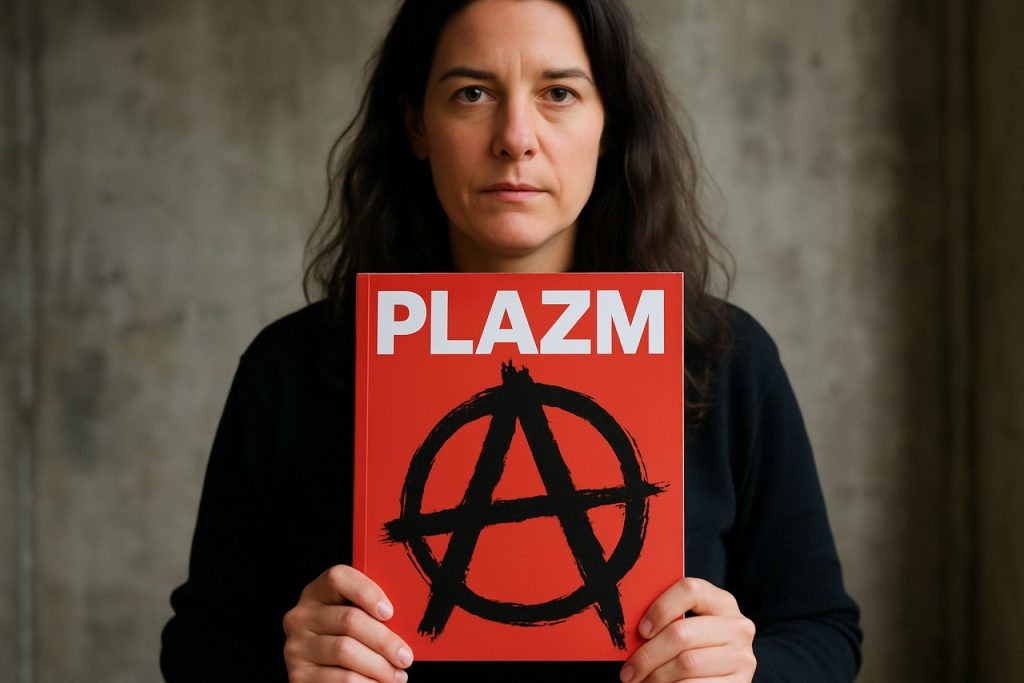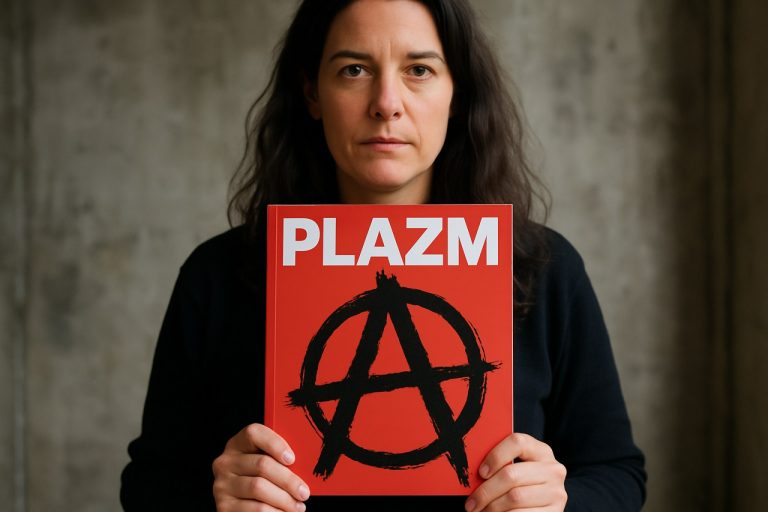
Inside Plazm Magazine: How an Independent Publication Redefined Creative Expression and Influenced Generations of Artists. Discover the Untold Story Behind Its Enduring Impact.
- Origins and Founding Vision
- Editorial Philosophy and Mission
- Influential Contributors and Collaborations
- Design Innovation and Visual Identity
- Cultural Impact and Legacy
- Notable Issues and Iconic Features
- Challenges, Evolution, and Adaptation
- Plazm Magazine in the Digital Age
- Sources & References
Origins and Founding Vision
Plazm Magazine was founded in 1991 in Portland, Oregon, by a collective of artists, writers, and designers, including Joshua Berger and Niko Courtelis. Emerging from the vibrant Pacific Northwest creative scene, the magazine was conceived as a platform to showcase experimental art, design, and progressive ideas that were often overlooked by mainstream publications. The founding vision centered on fostering a community-driven publication that blurred the boundaries between art, design, and activism, providing a voice for underrepresented and avant-garde creators. Plazm’s early issues were characterized by their DIY ethos, innovative layouts, and a commitment to social and political engagement, reflecting the founders’ belief in the power of print media as a catalyst for cultural change. The magazine quickly gained recognition for its bold visual identity and willingness to tackle challenging topics, establishing itself as a significant force in independent publishing. Over the years, Plazm has remained true to its original mission, continually evolving while maintaining its dedication to creative freedom and critical discourse. The collaborative spirit and experimental approach that defined its origins continue to influence its editorial direction and design philosophy today, making it a lasting fixture in the world of independent magazines. For more on its history and founding principles, see Plazm Magazine and PRINT Magazine.
Editorial Philosophy and Mission
Plazm Magazine, founded in Portland, Oregon in 1991, has consistently maintained a distinctive editorial philosophy centered on creative risk-taking, social engagement, and the amplification of underrepresented voices. The magazine’s mission is to serve as a platform for experimental art, design, and writing, fostering dialogue around pressing cultural and political issues. Plazm’s editorial approach is rooted in the belief that art and design are powerful tools for social change, and it actively seeks to challenge conventional boundaries between disciplines and genres. This ethos is reflected in its diverse content, which spans visual art, graphic design, literature, and critical essays, often addressing topics such as human rights, environmentalism, and freedom of expression.
The magazine’s commitment to inclusivity and innovation is evident in its collaborative editorial process, which invites contributions from both emerging and established creators. Plazm has a history of featuring work by influential artists and thinkers, while also providing a space for marginalized perspectives that are often overlooked by mainstream media. Its editorial mission is further reinforced by its involvement in community projects, exhibitions, and public events, aiming to extend its impact beyond the printed page. Through these efforts, Plazm Magazine continues to embody its founding principles of creative experimentation and social responsibility, positioning itself as a vital voice in contemporary independent publishing (Plazm Magazine).
Influential Contributors and Collaborations
Since its founding in 1991, Plazm Magazine has served as a creative nexus, attracting a diverse array of influential contributors and fostering collaborations that have significantly shaped its identity. The magazine’s open, experimental ethos has drawn renowned artists, writers, designers, and musicians, both from the Pacific Northwest and internationally. Notable contributors include graphic designer Stefan Sagmeister, whose innovative visual work has appeared in Plazm’s pages, and author Chuck Palahniuk, who has contributed original writing and interviews. The magazine has also featured collaborations with cultural icons such as David Carson and Shepard Fairey, further cementing its reputation as a platform for avant-garde expression.
Plazm’s collaborative projects often extend beyond print, encompassing gallery exhibitions, public installations, and multimedia events. These partnerships have included work with organizations like Portland Institute for Contemporary Art and The Museum of Modern Art, amplifying the magazine’s reach and impact. By providing a space for both emerging and established voices, Plazm has played a pivotal role in shaping contemporary art and design discourse. Its commitment to collaboration and experimentation continues to inspire new generations of creatives, making it a vital force in the independent publishing landscape.
Design Innovation and Visual Identity
Plazm Magazine has long been recognized for its pioneering approach to design innovation and visual identity within the independent publishing landscape. Founded in Portland, Oregon, in 1991, Plazm quickly distinguished itself through its experimental layouts, bold typography, and integration of fine art sensibilities into editorial design. The magazine’s visual identity is characterized by a willingness to push boundaries—each issue often features unique formats, custom typefaces, and collaborations with renowned artists and designers, such as David Carson and April Greiman. This commitment to visual experimentation has not only set Plazm apart from mainstream publications but has also influenced the broader field of graphic design, inspiring both emerging and established creatives.
Central to Plazm’s design philosophy is the idea that form and content are inseparable. The magazine’s editorial team and art directors work closely to ensure that the visual presentation amplifies the themes and messages of each issue. This holistic approach is evident in the magazine’s use of unconventional materials, interactive elements, and striking cover art, which often challenge readers’ expectations of what a magazine can be. Plazm’s design innovation has been recognized with numerous awards and has been exhibited internationally, including at the Museum of Modern Art and the San Francisco Museum of Modern Art (Museum of Modern Art). Through its fearless visual identity, Plazm continues to serve as a platform for creative risk-taking and a catalyst for dialogue within the design community.
Cultural Impact and Legacy
Since its founding in 1991, Plazm Magazine has played a pivotal role in shaping the cultural and creative landscape of the Pacific Northwest and beyond. Emerging from Portland’s vibrant art and design scene, Plazm quickly became a platform for experimental graphic design, progressive social commentary, and the intersection of art, music, and activism. Its pages have featured early works by now-renowned artists and designers, such as Shepard Fairey and David Carson, and have provided a launchpad for voices often marginalized in mainstream media.
Plazm’s influence extends beyond print. The magazine’s commitment to pushing visual boundaries and addressing urgent social issues has inspired a generation of independent publishers and designers. Its collaborative ethos fostered a community that blurred the lines between creators and audience, encouraging participatory culture and DIY ethics. The magazine’s design studio, Plazm Design, further amplified its impact by working with clients ranging from non-profits to global brands, infusing commercial work with the same experimental spirit found in its editorial content.
The legacy of Plazm is evident in the continued relevance of independent publishing and the ongoing dialogue between art and activism. Its archives are now part of institutional collections, such as the Ohio State University Libraries, cementing its status as a touchstone in contemporary visual culture. Plazm’s enduring presence demonstrates the power of independent media to challenge conventions, foster innovation, and leave a lasting imprint on both local and global creative communities.
Notable Issues and Iconic Features
Since its founding in 1991, Plazm Magazine has distinguished itself through a series of notable issues and iconic features that have left a lasting mark on independent publishing and graphic design. One of the magazine’s most celebrated issues is the 1995 “Type Issue,” which showcased experimental typography and featured contributions from renowned designers such as David Carson and Ed Fella. This issue is often cited as a turning point in the magazine’s visual identity, pushing the boundaries of print design and influencing a generation of creatives.
Another landmark moment came with the 2001 “War Issue,” which addressed themes of conflict and peace through provocative artwork and essays. This issue included collaborations with artists like Shepard Fairey and Barbara Kruger, further cementing Plazm’s reputation for blending art, activism, and editorial innovation. The magazine’s covers themselves have become iconic, frequently employing bold, unconventional imagery and tactile printing techniques that challenge traditional magazine aesthetics.
Plazm is also known for its “Plazm 20” issue, celebrating two decades of publication with a retrospective of its most influential content and contributors. The magazine’s commitment to social issues, experimental design, and cross-disciplinary collaboration is consistently reflected in its features, interviews, and visual essays. These elements have made Plazm a touchstone for both the design community and readers interested in the intersection of culture, art, and activism PRINT Magazine.
Challenges, Evolution, and Adaptation
Since its founding in 1991, Plazm Magazine has navigated a rapidly shifting media landscape, facing significant challenges while continually evolving its approach. Initially rooted in Portland’s independent art and design scene, Plazm confronted the decline of print media and the rise of digital platforms, which forced many similar publications to shutter. To adapt, Plazm diversified its content delivery, embracing digital formats and expanding its online presence, while still producing limited-edition print issues that emphasize tactile design and collectibility.
Financial sustainability has been a persistent challenge. Plazm has relied on a combination of advertising, grants, and community support, as well as collaborations with artists and organizations to fund its operations. The magazine’s commitment to experimental design and social engagement has sometimes limited its commercial appeal, but it has also fostered a loyal readership and critical acclaim. Plazm’s editorial focus has evolved to address contemporary issues such as social justice, environmentalism, and technology, reflecting broader cultural shifts and maintaining relevance in a crowded media environment.
The magazine’s adaptability is also evident in its collaborative projects, exhibitions, and workshops, which extend its influence beyond traditional publishing. By leveraging its network of artists, designers, and writers, Plazm has maintained a dynamic presence in both local and international creative communities. This ongoing evolution demonstrates Plazm’s resilience and its ability to adapt to the changing needs and interests of its audience, ensuring its continued impact on the art and design world Print Magazine.
Plazm Magazine in the Digital Age
Plazm Magazine, founded in Portland, Oregon in 1991, has long been recognized for its innovative approach to art, design, and independent publishing. As the media landscape shifted dramatically with the rise of digital platforms, Plazm adapted by expanding its presence online while maintaining its commitment to print. In the digital age, the magazine leveraged its website and social media channels to reach a broader, global audience, sharing content that extends beyond the printed page. This transition allowed Plazm to experiment with multimedia storytelling, interactive design, and digital archives, making its influential back catalog more accessible to new generations of readers and creators.
Despite the challenges faced by many print publications, Plazm has continued to produce limited-edition print issues, emphasizing the tactile and collectible nature of physical media. The magazine’s digital initiatives have included collaborations with artists and organizations, online exhibitions, and the use of digital tools to foster community engagement. By embracing both print and digital formats, Plazm has maintained its relevance and influence in contemporary art and design discourse. Its adaptability in the digital era exemplifies how independent magazines can thrive by blending tradition with innovation, ensuring their voices remain vital in a rapidly evolving cultural landscape (Plazm Magazine).



